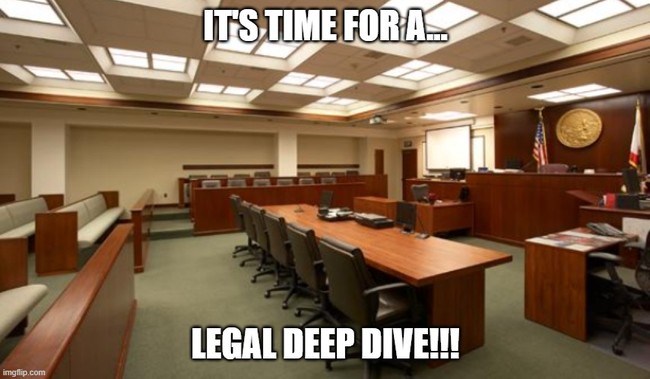
www.theblaze.com
Upgrade your liquor cabinet this Christmas with our top picks
Christmas is fast approaching, and what better way to get into the spirit of the season than with some fine American spirits? From single malts to bourbons, American distilleries have a surprisingly vast selection to choose from. And as you will see, their products are something to be proud of!Take a look at some of our favorite pours from across the country during this Christmas season.Single maltsWe start our Tour de American Single Malt with a pour that could fool even the most trained tasters into thinking they were on the banks of the River Spey. The Courage and Conviction line from Virginia Distillery Co. is one of the most Scotch-like American single malts I have ever tasted. And for any fan of sherry-forward Scotch, Courage and Conviction Sherry Aged is a must-try. On the nose is a fragrant, buttery, red fruity sweetness that Macallan lovers will recognize, with plenty of vanilla and just a hint of green apple peel. The taste mirrors the nose, especially that butteriness, with a bit more emphasis on spice and toasted hazelnuts. The finish elongates those sherry notes even more, toward the direction of Oloroso: dried red fruits, toffee, and caramel.All in all, Virginians should be more than proud of what’s coming out of their state! But I’m a little biased toward our next stop: Texas.Perhaps no state in the craft whiskey scene is more controversial. The hot Texas climate scorches whiskey as it ages, and you either love it or hate it. I, for one, love it. The oak overdose can be quite a hassle in the world of new barrel-aged bourbon, but American single malt has the option to play outside those rules.Enter one of the original Texas distilleries and the biggest player in Texas single malt: Balcones. Its Lineage expression embraces both new and previously used barrels, resulting in a fruit bomb that’s still blooming with Texas character. Fig jam, vanilla custard, and grapefruit pith greet you on the nose. Honey, raw fig, peach, and more of that grapefruit dance on the tongue. The finish lingers with classic Texas charred oak, burnt sugar, and a fruitiness that awakens when you breathe it all in. Lineage was the whisky (there’s that missing “e” again) that first made me fall in love with Balcones. And at only about $35 a bottle, it’s hard to beat!Traveling south in the same state, we arrive in the Texas Hill Country, a wild land of limestone cliffs, cedar groves, and rolling bluebonnet pastures. To me, it’s home — rattlesnake-riddled, sun-scorched home. It’s serene, with an attitude, and so is its single malt. About an hour north of San Antonio, we find Andalusia Whiskey Company and its Irish-peated expression, Revenant Oak. The serenity: German chocolate cake, rich vanilla, and savory butterscotch. The attitude: smoked brisket with just enough sweet, peppery barbecue sauce to remind us that we’re in Texas. Put simply, it’s cake at a barbecue joint: an unexpected, yet oddly satisfying pairing that’s about as mouthwatering as it gets.But unlike Scotch, American single malt doesn’t always use peat to add smoke. Peat bogs are everywhere in Scotland — it was the fuel the Scots had on hand to dry their barley. Here in America, if you want to start a fire, you use wood. At Santa Fe Spirits in New Mexico, they chose locally abundant mesquite. Aged in the high desert at 7,000 feet above sea level, the company's Original Mesquite expression of Original Santa Fe Whiskey is a prime example of forging your own traditions. This whiskey smells nothing of peat, but more like tangy barbecue sauce dripping into a mesquite campfire. This carries over to the taste, which also dances with caramel, bright spice, and zingy green apple (it did start out as an apple orchard, after all). Santa Fe SpiritsNext, we leave Texas, heading back north and up into the Rockies to visit a pioneer in American single malt that has been making possibly the most quintessential pour of the category since 2004: Stranahan’s Colorado Whiskey. Soft on the nose, Stranahan’s Original has chocolate, butterscotch, and a floral graininess, like the crisp warmth of an early mountain spring. The taste brings the ripe fruits of summer, which is short, albeit sweet, up in the mountains. So fall sets in quick: honey, fresh grain, and that chocolate again. Stranahan’s Original finishes just shy of winter, since Coloradans, I can imagine, get enough of that already. Why not enjoy the other seasons? Stranahan'sOr even other regions entirely. Lately, Stranahan’s has been experimenting with finishing American single malt in barrels from across the world: Irish whiskey, tequila, and, most recently, rum. These unique whiskies are released as the company's Diamond Peak series, one experiment at a time. The third annual release was finished in Caribbean rum casks and provides a familiar yet surprising take on Stranahan's single malt. Sweet notes of vanilla are amplified in the aroma, turning into banana Runts candy. Sweet toffee and tropical fruits arrive with a sip, along with a silky mouthfeel that evolves into coconut candy, earthy malt, and the classic Stranahan’s chocolate on the finish. At around $80 a bottle, it’s a pour to savor, and it delivers!On the final stop of this tour, we head to the Pacific Northwest, which has become a hotbed for American single malt, in large part thanks to Seattle’s Westland Distillery. Westland’s base offering is a prime example of its unique flavor profile, which takes the chocolate note of many American single malts and boosts it up, adding a roasted nuttiness to the finish. It’s a good place to start. But if you fall in love with Westland, might I recommend something special?Westland Garryana is a night among the pines in the northern forests. At once desserty and dark, but sparkling, like a warm cup of hot chocolate under a starry sky. “Garryana” refers to the native species of oak that the whiskey is partially aged in. As for the rest of the aging process, it varies by batch. I’ve been enjoying Edition 6, which mixes Garryana barrels with first- and second-fill sherry and brandy barrels — both of which come across in spades. The sherry sweetness is prominent at the beginning of the sip, while a cognac-like effervescence appears midway. It clocks in at 50% ABV with a premium price tag of around $150. So savor it respectfully, preferably with friends around a late fall campfire.Royal Lochnagar’s 12-year-old Highland Single Malt Scotch Whiskey is the liquid version of an old private members’ club with tobacco-stained ceilings, high-backed green leather chairs, and a curious collection of artifacts left over from past members, all alluding to greatness while forever remaining in the backdrop. For better or worse, this dry and rounded house affords no member an opportunity to disturb or overpower the others — except sometimes an uppity vanilla. Instead, it seamlessly balances citrus on the nose, lightly spiced toffee on the tongue, and old wood on further reflection. Best served amid a spirited backroom debate over that which appears to most matter — or, alternatively, in silent solitude, awestruck by the conclusion.BourbonAngel's Envy is the Wilf Carter of bourbons. Carter, known south of the 49th parallel as Montana Slim, was a minister’s kid — one of nine — who rode the rails west, trampled mountain trails, and cow-punched until it came time to sing pioneer tunes to settled folk, on at least one occasion doing so while dangling from a telephone pole. Carter is disarming at first, with his smooth, cherry-sweet voice and inoffensive themes, and can sometimes come across as nutty. There is, however, darkness beneath the surface (oak, raisins) and a mild burn that lingers long after the yodeling cowboy appears to be finished. The Louisville Distilling Co.’s Kentucky bourbon, which does a six-month stint in port barrels before bottling, fetches roughly $40 and is best served when “it’s twilight over Texas.”Heaven Hill Distillery’s Rittenhouse is a campfire, one full tank away from civilization and on the starry side of nowhere. This fire will heat your body without burning it, throwing off whiffs of cinnamon, nicely turned s’mores, and nuts previously shelled over the coals. A campfire is always a finale — bringing the night, week, or hunting season to a crackling close. At 50% ABV, you’re best off kicking back with this 100 proof straight rye until the last ember loses its glow and sleep takes you. Heaven Hill’s $55 standout is best served with your phone, boots, and holster off.Should you want just a little more sizzle in your rye, Heaven Hill has one more trick up its sleeve. Clocking in at a lusty 55% ABV, Pikesville is one of the smoothest 110-proof drams you’ll encounter — without sacrificing any fire, of course. Born in Maryland, a pre-Prohibition hot spot, Pikesville eventually put down roots in Kentucky, where Heaven Hill maintains the brand’s venerable 1890s approach to distilling and aging. Yes, each bottle of Pikesville is at least six years old, part of the secret to its success on the tasting competition circuit. It’s as advertised on the palate — a country bakery melange of vanilla, honey, spice, and smoke. Not to be missed.Bulleit Bourbon Frontier Whiskey is the truck that never lets you down. There may have been others you fancied in your youth — perhaps even a foreign make — but in a world full of pretenders, it’s hard to go wrong with a tried and proven, no-pretense American classic. Bulleit is strong but handles smoothly, feels good, and gets you to where you need to go. You might smell gas on first open, but cooked mash will quickly take over as you settle into your old groove. Smoke — not the kind you’ll need to see a mechanic about — lightly accents mild malt, maple, and dried fruit tastes, while never overcomplicating things. The Bulleit Distiller’s titular star is an amber staple too good to let collect dust, which usually goes for around $25. Best served at a poker table in a sunbaked saloon where everything appears to be melting but your composure.Heaven Hill’s Elijah Craig Small Batch straight bourbon is a chestnut fiddle and a well-rosined bow: not for every occasion, but more than welcome at a strathspey, a wedding feast, or a wake. There’s a touch of cherried chocolate, caramel, and vanilla sweetness that ensure no single note is flat and an oaky finish to round out any renegade sharps. Too much fiddle will have you hating catgut and horsehair, even if fine-tuned by Heaven Hill. However, for $30, this non-age-stated bourbon will play you a pleasant jig whenever the time is right.Rabbit Hole’s Cavehill Four Grain Triple Malt bourbon is a paperback thriller. There’s plenty of interest going on, and it’s great on vacation. The “but” looms only for those seasoned bourbon drinkers keen on finding a life-changing book — or, perhaps, getting around to finally finishing "The Brothers Karamazov." Cavehill starts off with a lovely bouquet: apples and berries. Authors such as the late Tom Clancy who do thrillers well engage readers as soon as possible. Cavehill certainly does so, providing intrigue in the first pages with tastes of pepper, toasted grain, and spiced oak, all dripping with honey. One of the antagonists — raw alcohol — also rears his head early in the book. While ostensibly dispatched within short order, this antagonist makes a short-lived appearance toward the very end. With his defeat, however, there is a nice custard finish. This $60, 95-proof whiskey is best served between great reads.Sometimes, a pour transports you before you even realize it. With this whiskey, I was back on Christmas Eve, huddled around the campfire of a family I had just met, relaxing with mutual friends who taught me that the only thing better than a s’more is a s’more with a Reese’s cup in the middle. Fox & Oden Double Oaked bourbon doesn’t exactly smell like a s’more or a campfire, but that’s the magic of good whiskey: It always takes you back to the community. There are definite notes of deep chocolate, smooth cinnamon, and a slightly toasted marshmallow on the nose. But also, caramel apple, molasses, and an effervescence reminiscent of a well-aged cognac. And on the taste, flavors of melted chocolate, that smooth cinnamon again, and oak meld in unison with a sensation: the warmth of a fire, itself like a warm, familiar embrace on a cold Christmas Eve. It’s 99 proof and sells for around $99.Bourbon is the nation’s signature spirit, and like any industrious American on the rise, you want a selection that will impress clients and friends alike. You’ve moved beyond Fireball and rum with Coke and are ready to enjoy a more refined experience. The good news is that after decades of chasing fads in foreign spirits like vodka and gin, Americans have returned home to their native drink, sparking a bourbon boom. As a result, bourbon enthusiasts now have more distillers and unique expressions than ever before, but prices and scarcity have also soared along with demand.So here are some options to help you build a respectable bar without draining your wallet.The Heaven Hill Distillery recently released its Old Fitzgerald seven-year bottled-in-bond bourbon, and it has been making quite a splash. This elegant bottle comes in at around $60 and looks great on a shelf, but more importantly, the whiskey inside is excellent. The 100 proof is enough to bring a concentrated flavor and smooth texture without scaring off beginners. The wheated mash bill also helps create a soft finish, making it perfect for those trying whiskey neat for the first time. With notes of vanilla, honey, and butterscotch paired with a subtle oak, Old Fitzgerald is a crowd favorite, ideal for starting the night and opening up your palate.When most people think of bourbon, they usually aren’t considering Indiana, but the Midwest has produced some excellent distilleries, and one of the standouts is Hard Truth. The entire lineup is superb and generally runs between $50 and $60. You can’t go wrong with any of Hard Truth's options, but the standout for me is the four-grain bourbon. This 100-proof offering is a butterscotch bomb with plenty of sweetness and a pleasant medium finish. It’s another great choice to warm up the taste buds or to pass across the bar to someone used to beer or cocktails.Old Forester is a classic brand with a wide range of great options, including its 1910 double-barreled bourbon. Don’t let the 93 proof fool you; this bottle is packed with flavor and highly approachable for under $60. The whiskey is aged like a typical bourbon but finished in a second, heavily charred barrel, which adds subtle hints of chocolate, marshmallow, coffee, and dark oak. The 1910 is also a fantastic choice for elevating coffee-based cocktails like the Revolver.Our first higher-proof whiskey on the list is the 1910’s bigger brother from Old Forester, the 1920 Prohibition. At 115 proof, this is a slightly more challenging release that will reward you with rich notes of cherry, molasses, and bananas Foster. At around $55, the 1920 is consistently ranked as one of the best values in bourbon for good reasons and can serve as a gateway to more complex whiskeys.Wild Turkey might be the quintessential Kentucky bourbon, but it offers much more than the basic 101 you’re probably familiar with from college. The company's lineup includes many excellent options, but Rare Breed strikes the perfect balance between value and complexity. Often available for under $50, this 116.8-proof bourbon features a blend of 6-, 8-, and 12-year-old whiskeys that deliver bold flavors. Notes of cinnamon, baking spices, orange peel, and a touch of nuttiness lead to a long finish, and it holds up well to a block of ice for those who prefer a chilled drink.Something strange happens when you age whiskey in the intense heat of Texas, imparting a particular flavor that is sometimes called the “Texas funk.” The intense temperature creates a rapid aging process, which allows Still Austin to put out 2-year-old whiskey that tastes far more complex than it has any right to. The company's $60 cask strength expression comes in at 116 proof and reveals notes of deep brown sugar, cherries, and pastry crust, finishing with a bold rye-spice kick. Texas whiskey isn’t for everyone, but if it suits your taste, Still Austin will keep you coming back.Jack Daniel’s has expanded its range over the past few years, including its excellent line of single-barrel, barrel-proof expressions. Old Number Seven is a fine entry-level bottle, but something special happens to Jack Daniel’s as it reaches higher proofs. Single barrels can vary in flavor and strength, but with proofs in the 120s and 130s, this whiskey isn’t for the faint of heart. Dark, rich note of molasses and banana blend with a flavor reminiscent of drinking a cola, but no one will judge you for cooling this monster down with a block of ice. Many local retailers partner with Jack Daniel’s to select exceptional barrels for their stores. If you can find a store pick, I highly recommend it. For those interested in exploring America’s other native whiskey, the rye, Jack also offers an excellent single-barrel, barrel-proof expression that contains enough corn to taste more like bourbon — a great way to start without jumping straight into the deep end.James E. Pepper Barrel Proof is yet another relatively new release gaining wider distribution. Its decanter bottle features a stunning retro design that stands out in any collection and instantly adds a touch of class. The 106.6 proof can be deceiving, as this whiskey offers a bold and spicy black pepper flavor that dances across the palate. Notes of almond, oak, and dark fruit give way to vanilla and baking spices, with the pepper remaining prominent through the finish. This is a wonderfully complex bourbon that has steadily gained a dedicated following, thanks to its exceptional value at a $65 price point. Few bottles under $100 combine this aesthetic appeal and rich flavor, so if this whiskey has reached your local market, I highly recommend picking it up.You may have noticed that one of America’s most popular distilleries has been absent from this list: Buffalo Trace. The Buffalo Trace lineup includes some of the most sought-after bourbons in the country at reasonable prices; however, they are often difficult to find. If you’re in an area where you can regularly walk into a store and find Blanton’s, Eagle Rare, E.H. Taylor, and Weller on the shelf, consider yourself lucky. These whiskeys are highly desired, for good reason, and typically retail for $40 to $60, but patience is key — avoid paying marked-up prices.Remember, exploring bourbon is a journey, and there are many great, affordable options available. Happy hunting.

















